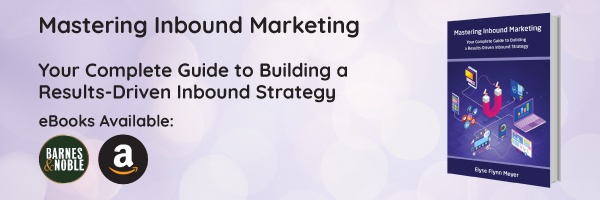Email marketing has been a tried and true method for businesses to reach their target audience for years, but with the number of emails that individuals receive every day, it's essential that your emails stand out. By following best practices, you can increase your email open rates and email click-through rates, ultimately driving more leads for your business. It's crucial to consistently remember these best practices every time you consider sending an email. Whether you're a seasoned email marketer or just getting started, understanding the importance of optimizing your emails can make all the difference in your inbound strategy's success. Here are six best practices to keep in mind with every email to ensure you're maximizing the effectiveness of your email marketing program.
- Segmentation: Your first priority should be to ensure that your emails are being sent to the right audience. Even if you want to send an email, some people might not want to receive it. Different ways to segment your audience include customers versus prospects, region-specific emails for events, products or services of interest, buyer persona, where the individual is in the buying process, and more. For example, if you know that a prospect is a business owner or an individual contributor, the content you send will be different to align with their unique buyer persona.
- Short & Simple Subject Lines: Since over 70% of emails are opened on mobile devices, make your subject lines no longer than 50 characters. You need to be strategic in how you approach the content in your subject line. Consider using emojis to help illustrate your message and increase open rates. In my consulting with both large and small organizations, we have seen an average open-rate increase of 8% when using an emoji for B2C and B2B companies. Also, including the prospect's first name in the email subject line (assuming you have that information in your database) increases the open rate by an average of 11%. Personalizing and making your subject line stand out is essential to increase engagement.
- Templates by Email Type: When building your email strategy, consider designing several templates for email marketing based on the type of email you are sending. For example, a transactional email should be very simple and only include your logo, confirmation text, and a link to the next step in the process. If you are sending a promotional email, include more imagery and different content modules to display several relevant content offers. Promotional emails will be longer and have additional visual components and content to engage users at various stages of the buyer's journey.
- Include Links and Calls-to-Action (CTA): Emails are meant to engage your prospects and take them to the next stage of the buyer's journey. If you send your prospects an offer to download an eBook, your links and calls to action (CTAs) should take them to your eBook landing page. If you send your prospects to a blog post, the link should take them directly to that post. The biggest issue I see when people tell me their emails are not driving engagement is that there is simply no next step for those prospects to take. This is a simple part of the process but is often forgotten. People want to know exactly what to do when they receive your email, so you need to guide them in that direction and down the path you have created.
- Personalize: Personalization is one of the most effective ways to increase engagement and email click-through rates. When you capture information about the subscriber in your database, such as First Name, Company Name, Job Title, and Industry, you can utilize those critical pieces of information in your email. Something as simple as, "Hi {first name}," instead of, "Hi subscriber!" will increase how people engage with the rest of the email. If you have their company name, you can personalize content such as, "We can help {company name}" instead of, "We can help your business." These simple personalization methods help you stand out from other emails the prospect receives and will increase engagement.
- Mobile First: Since 70% of emails are opened on mobile devices, responsiveness is no longer an option...it is a requirement. As a critical first step, you must design your emails thinking "mobile-first." Consider the email length, content, imagery, and alignment on mobile before anything else. If you are unsure how a mobile-responsive email should look, remember that the content needs to "respond" to the device used to open the email. For example, the content will modify slightly on tablet devices and then condense on mobile devices. This does not mean that you need to shrink the content. It should remain the same font size so it is easily readable.
There are many steps to ensure that your emails connect and engage with your audience. While the list of things to consider when creating your emails is lengthy, it will become a standard and repeatable process as you build more emails as part of your inbound strategy. Always focus on best practices before you click to send your next email marketing campaign.
Are you looking for ways to optimize your inbound strategy? The "book "Mastering Inbound Marketing: Your Complete Guide to Building a Results-Driven Inbound Strategy," written by Elyse Flynn Meyer, Owner & Founder of Prism Global Marketing Solutions, covers every aspect of the inbound marketing methodology, including the revenue generation trifecta of marketing, sales, and the customer experience. Check out the book to see how to most efficiently and effectively develop, implement, and maintain your inbound strategy.


__Square.png?width=250&height=250&name=Marketing_Hub_(1)__Square.png)




.png?width=250&name=diamond-badge-color%20(1).png)
